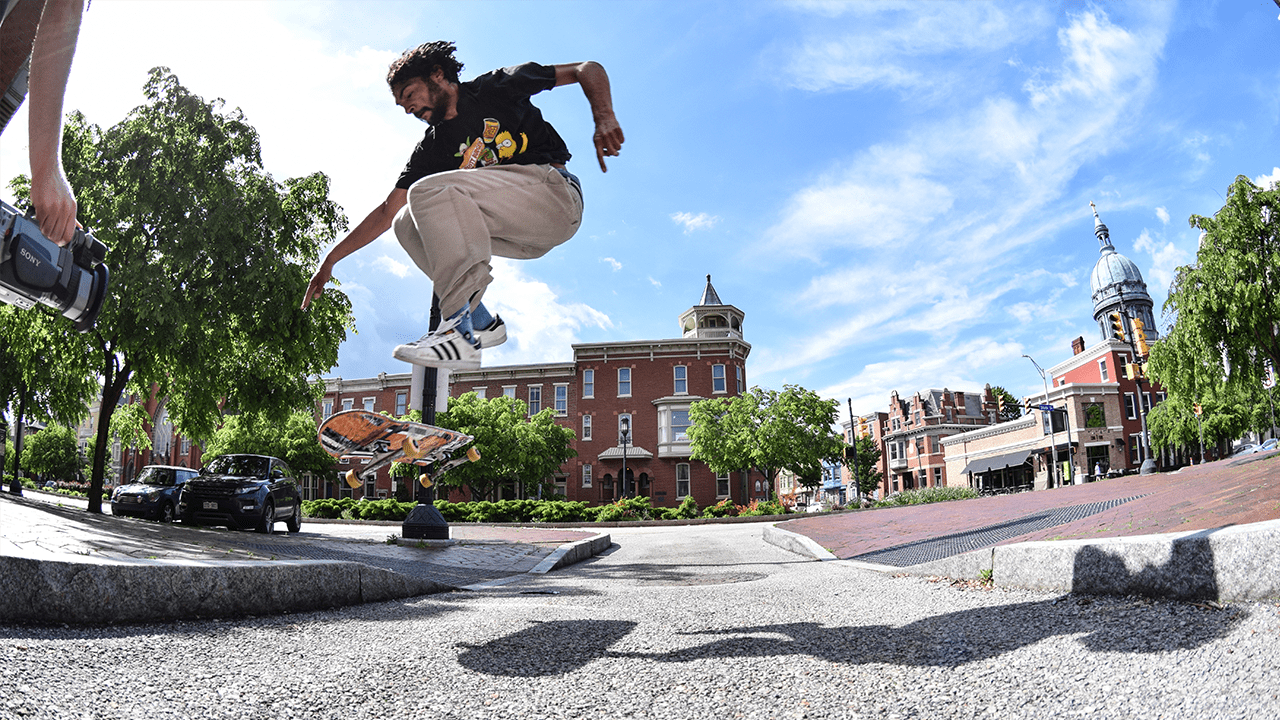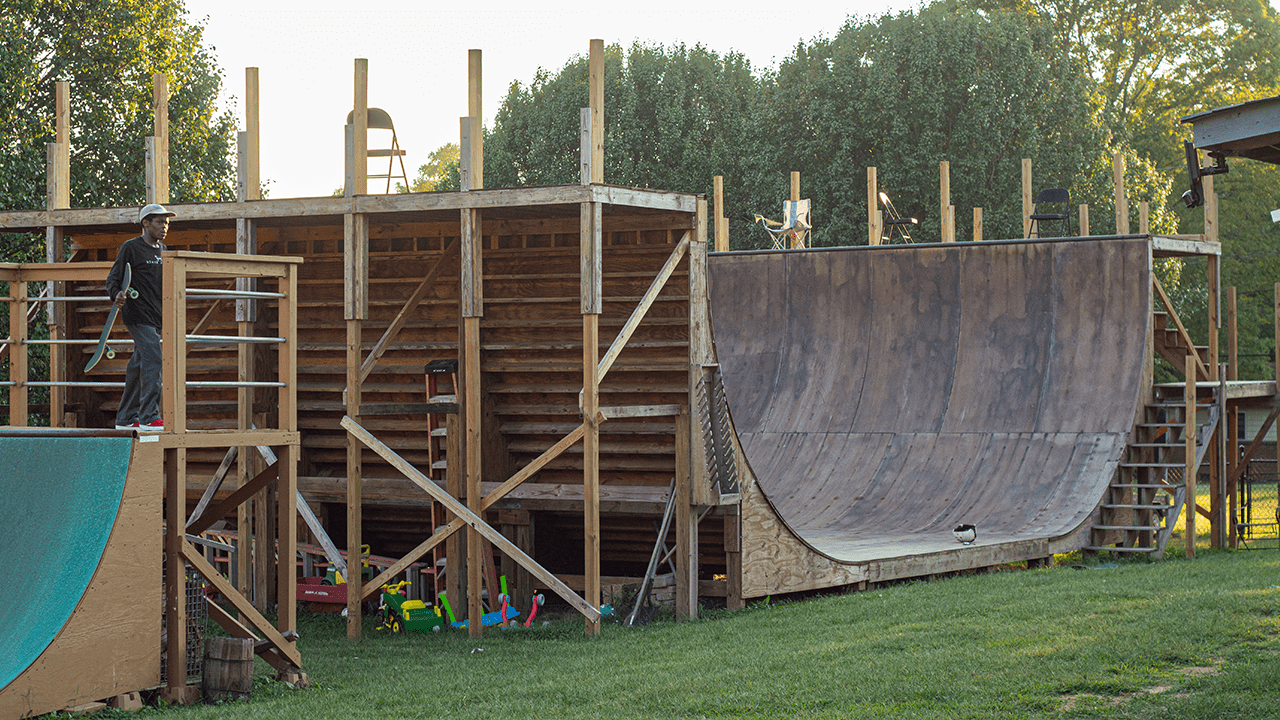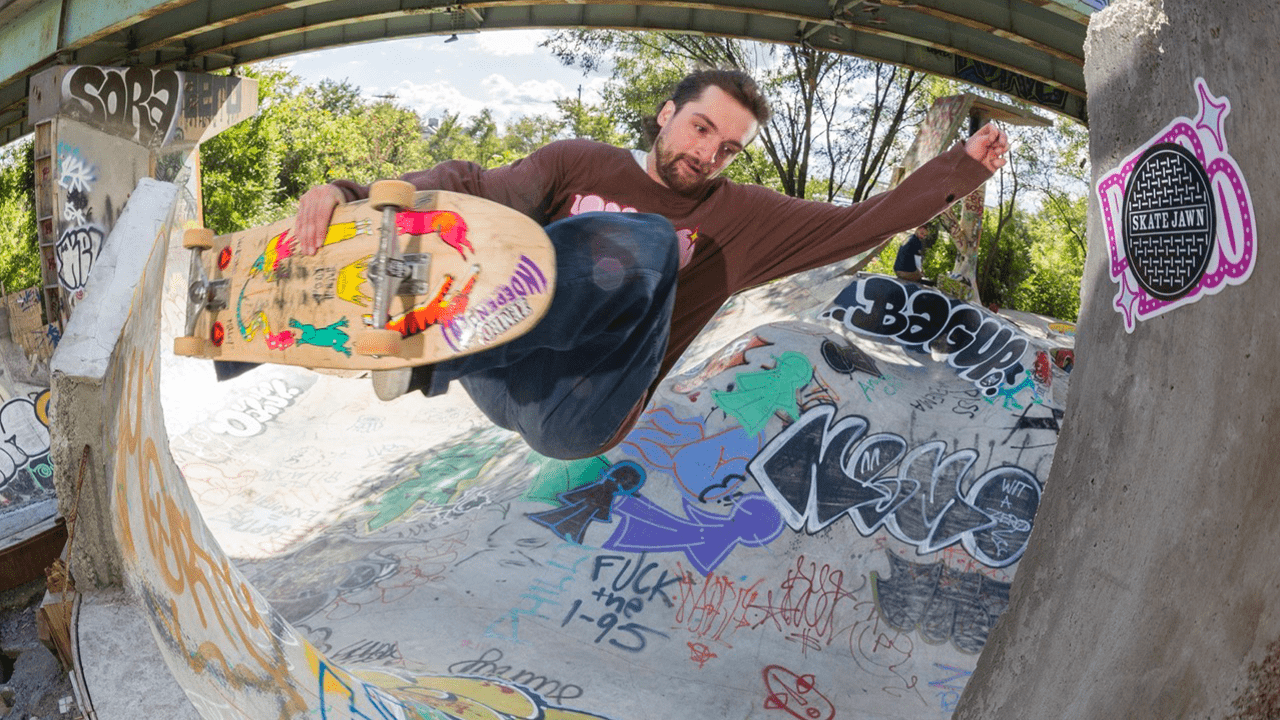Words and photos by Tyler Storm Brady
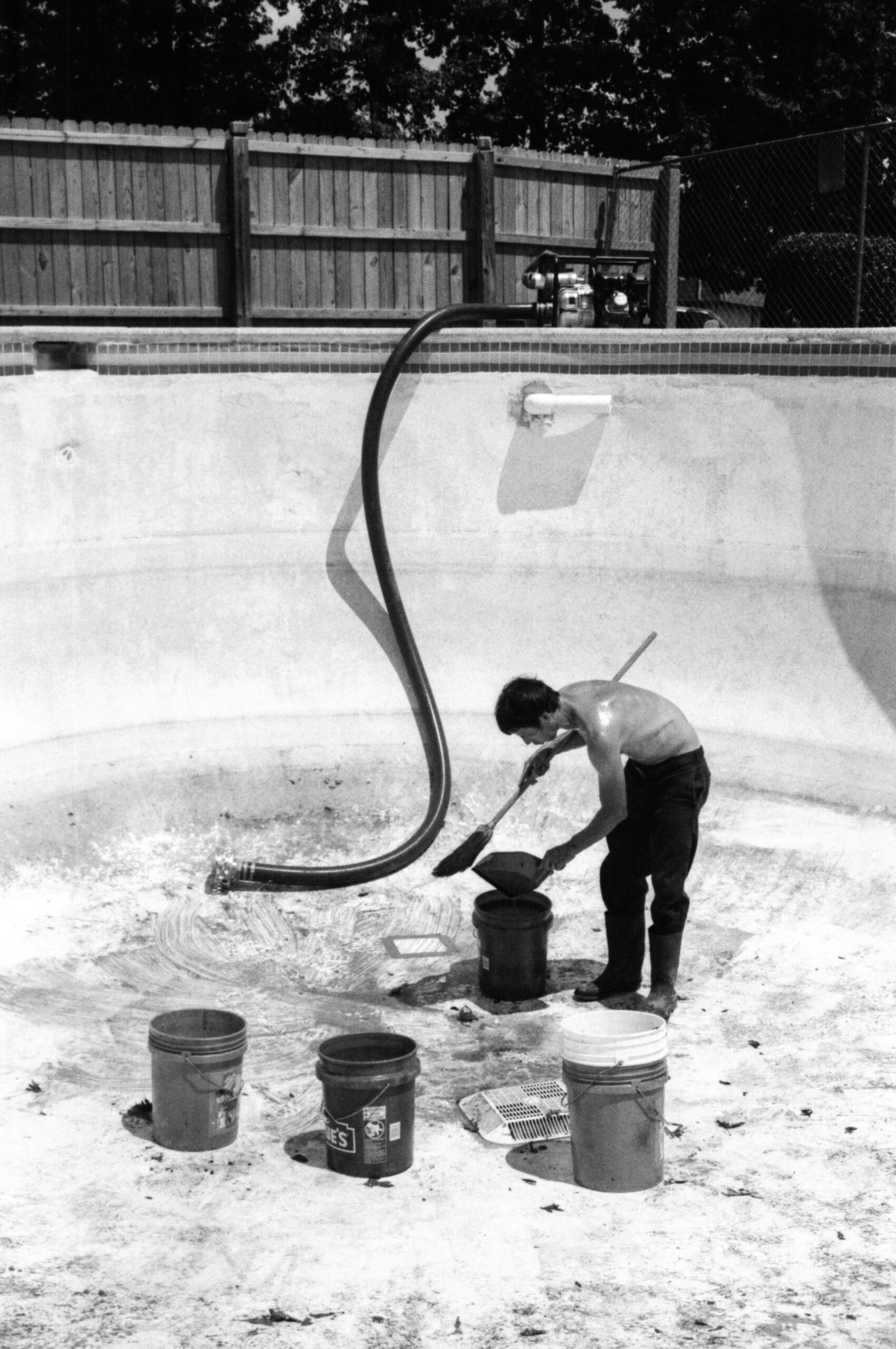
I threw my Shipyard Skates Ben Hatchell board over the chainlink fence and climbed across first, in order to document my friends’ efforts to leave with my Canon Sureshot 85 Zoom. Earlier, a friend named Pat had given us a lead on an empty pool in our city of Richmond, Virginia. Four of us arrived at sunset with the fear of missing out coursing through our veins. We didn’t remove the eight to ten inches of water resting around the gauntlet of deep-end drain obstacles. We didn’t apply any clear coat to the antique aggregate coping. We simply started skating, not caring if the pool would be swim-ready by the next evening. It was.
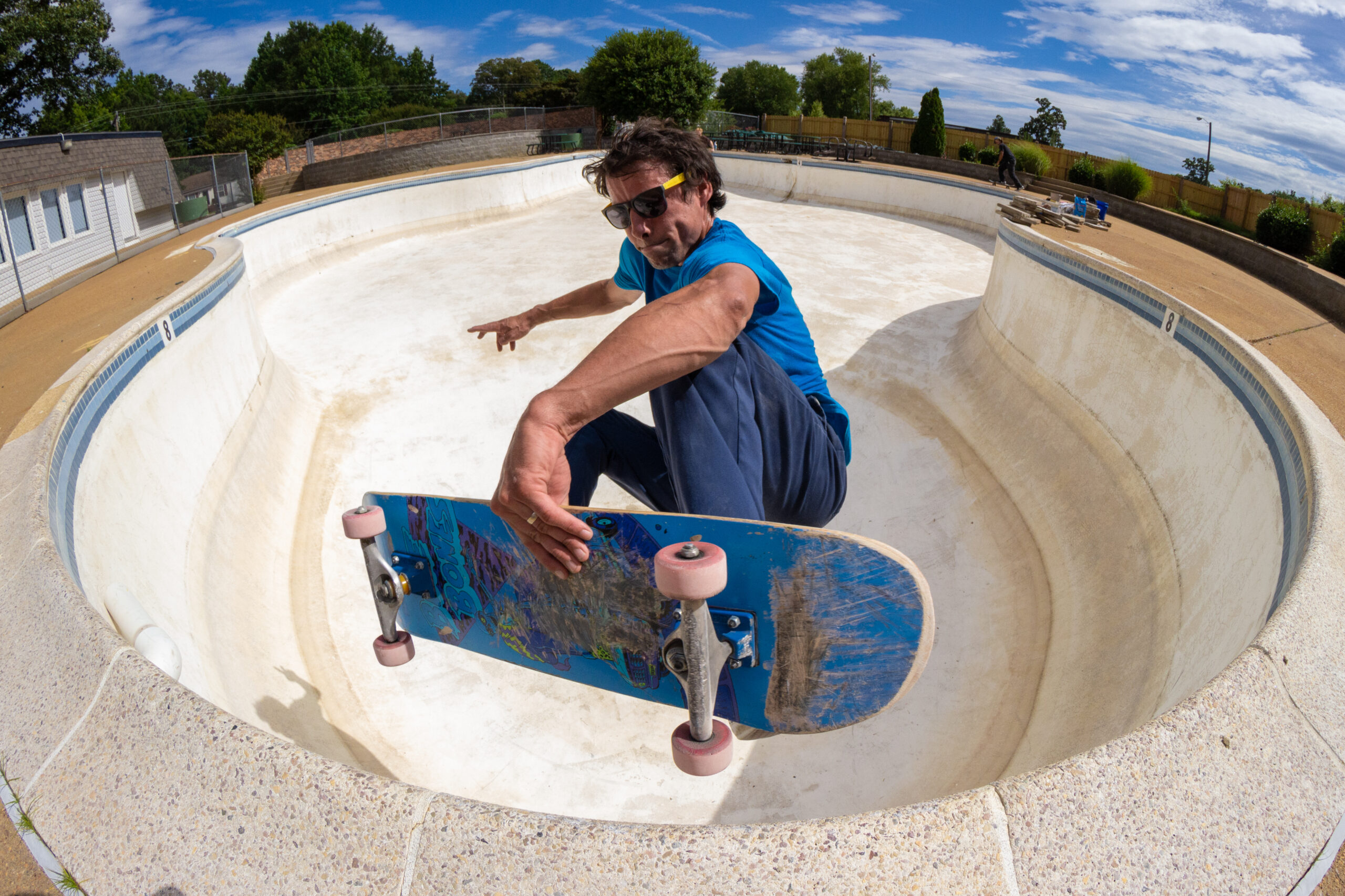
That was the weekend leading up to Memorial Day of 2015. The repetitive efforts to find our amoeba-like friend empty have failed each of the seven years since. A new hope awakened when COVID-19 began to prevent pools from opening. Two neglectful years later, the pools struck back in disrepair and closed indefinitely. The return of the pool to skate-ready form.
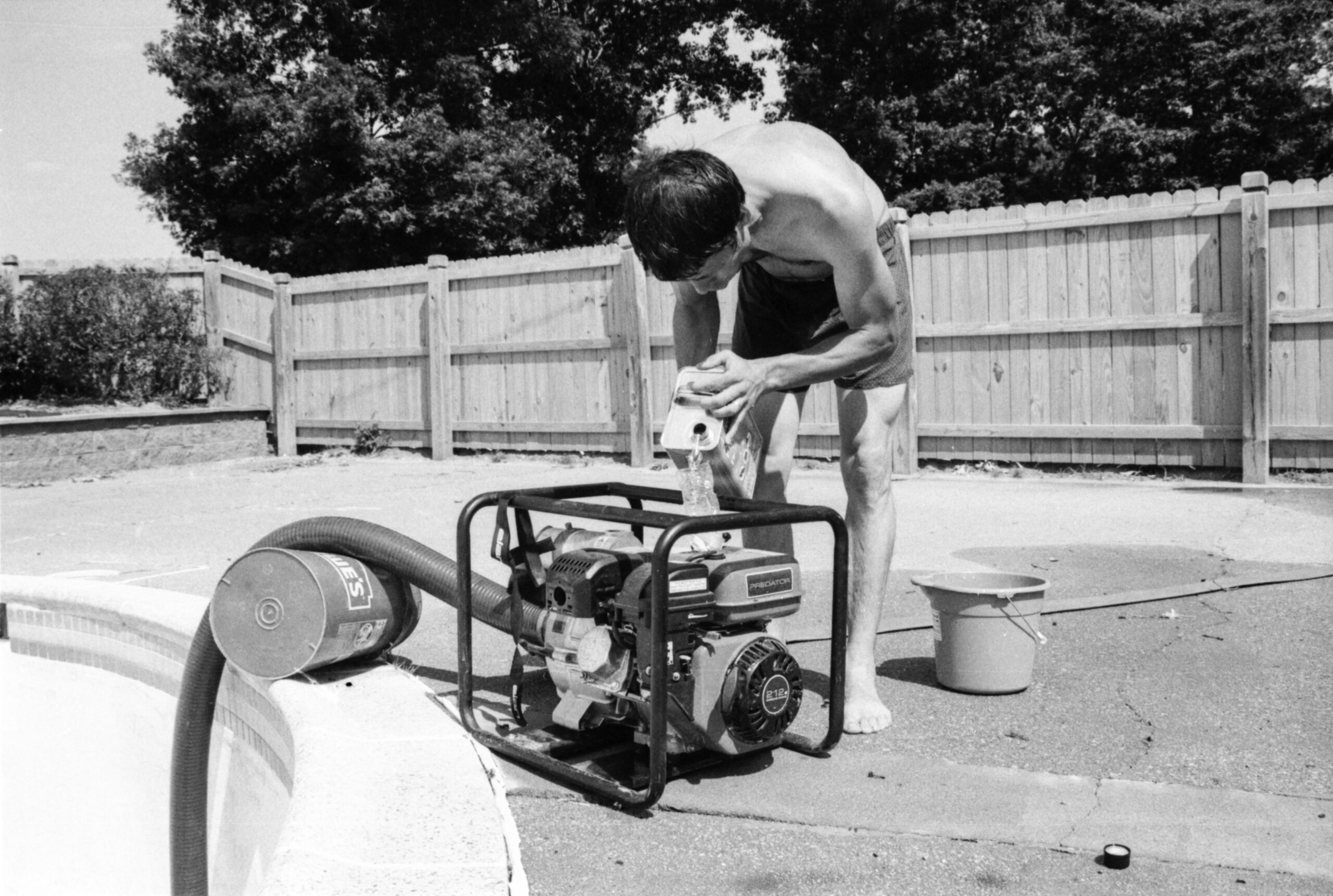
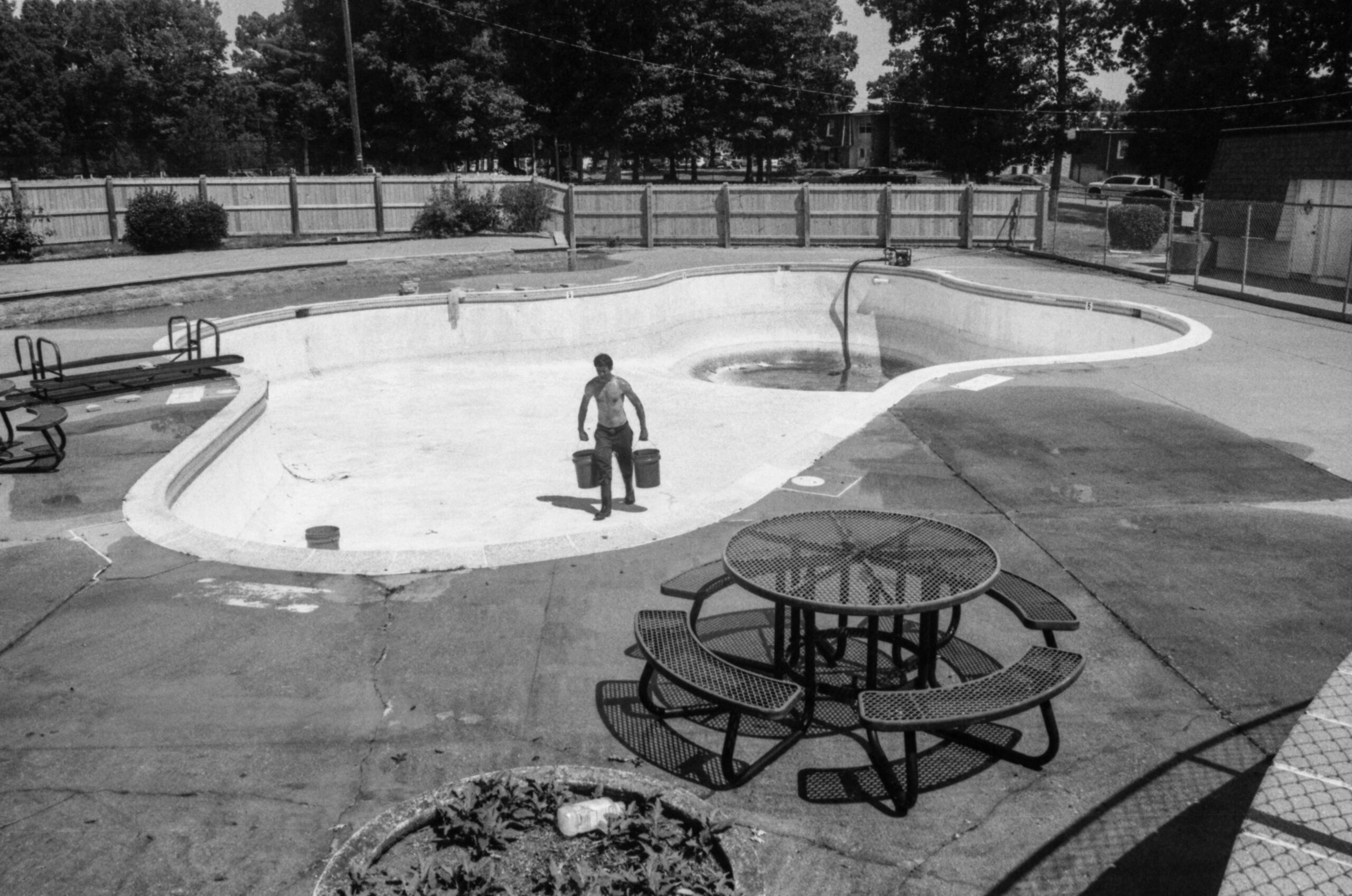
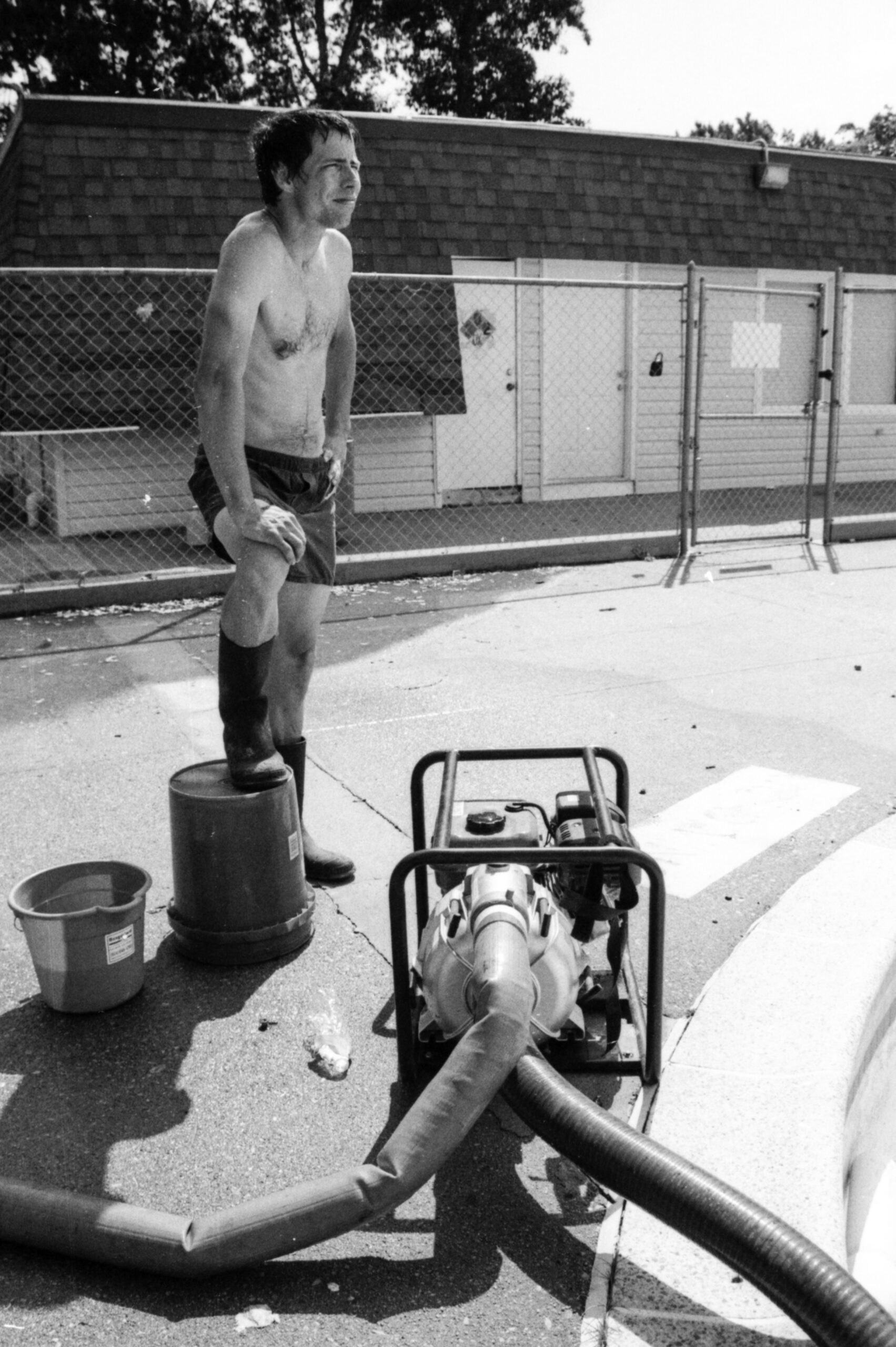
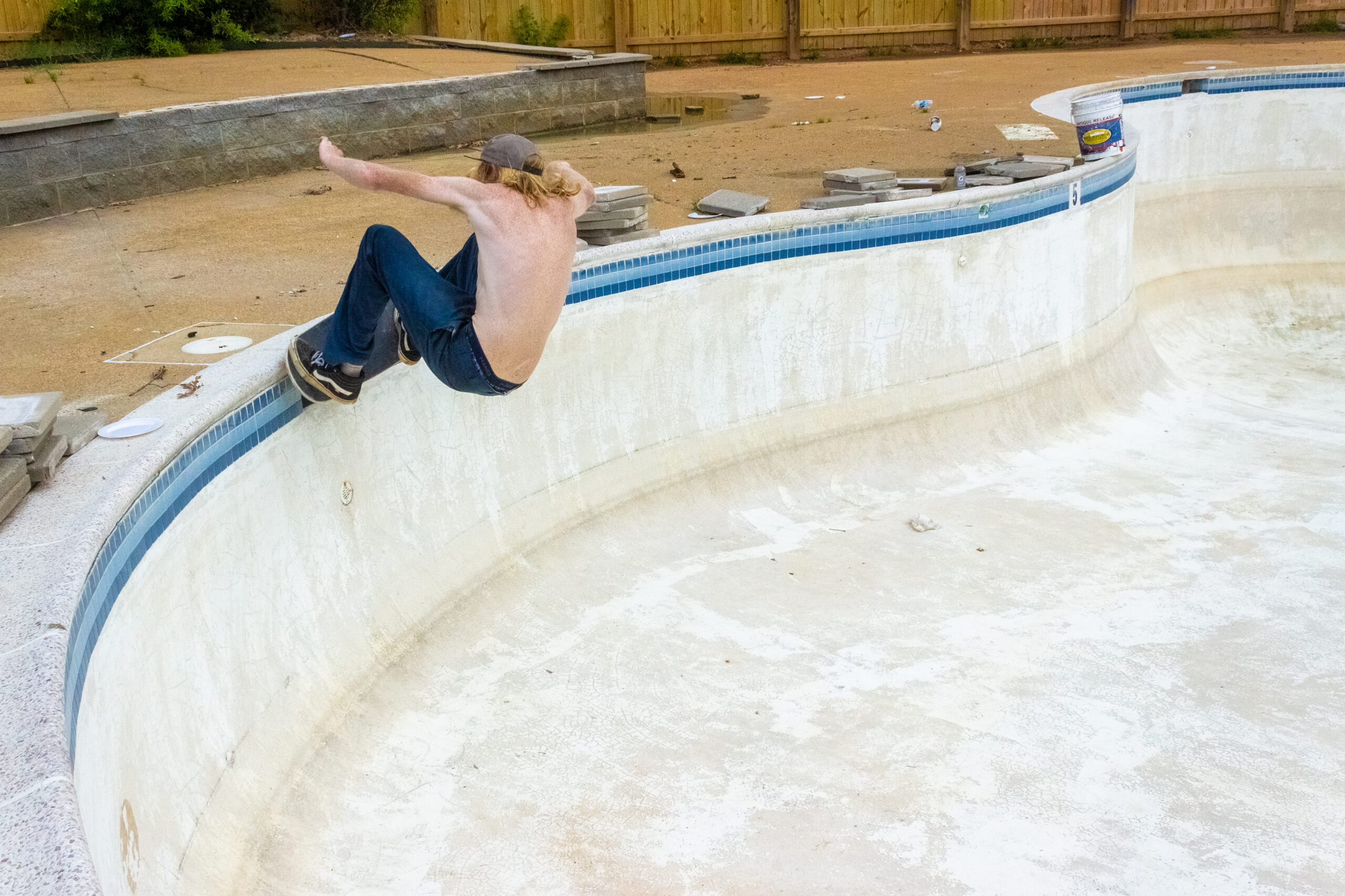
In June of 2022, I tested positive for COVID-19 and strep throat simultaneously. My prescribed amoxicillin eliminated my symptoms in two days time, however my five-day quarantine had its own two days remaining. That’s when I received the text from Pat. Our “seven-years ago” pool was empty. I felt panic, anxiety, and assumed I would have to wait seven more years for the next barge.
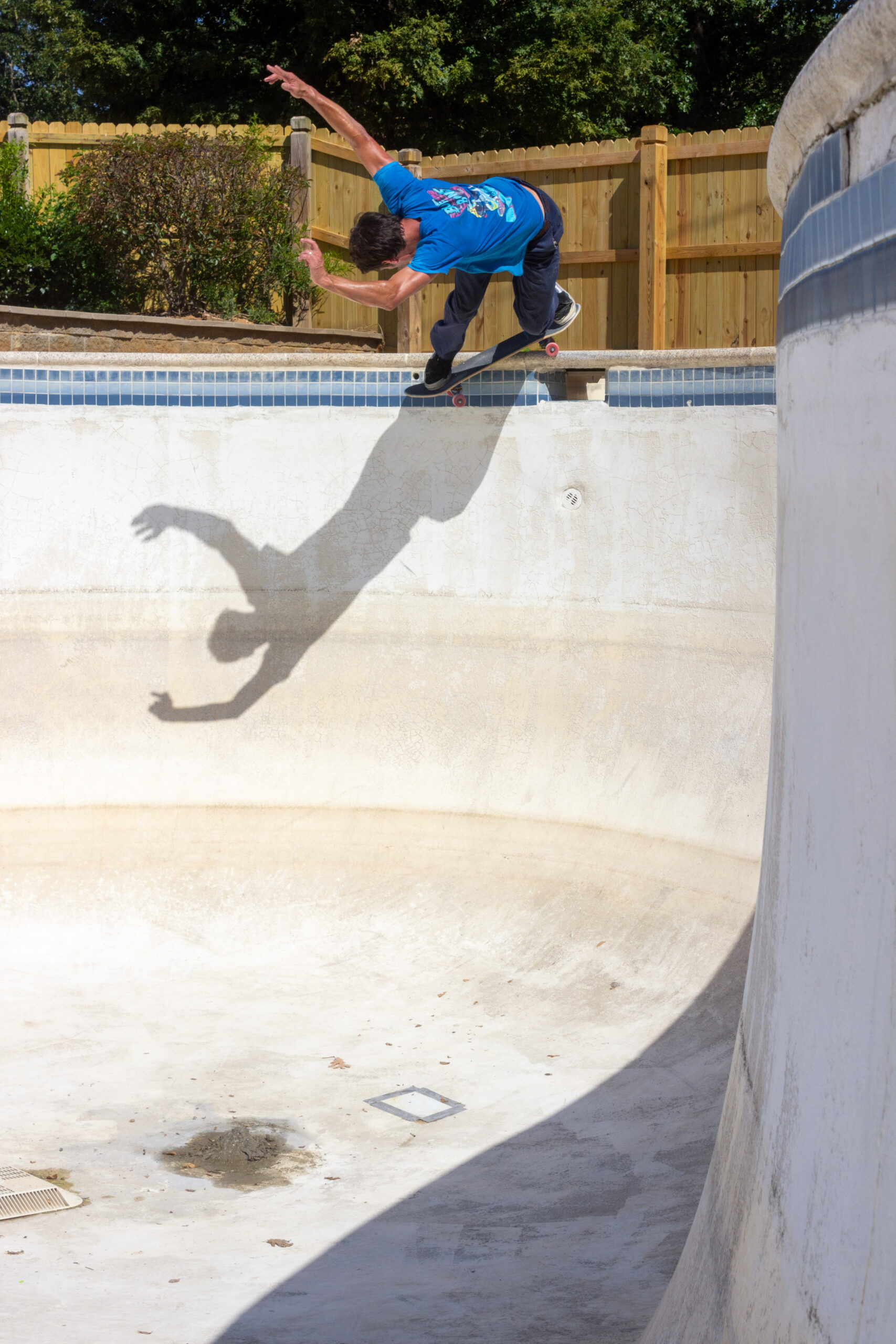
My quarantine ended and the pool was still empty. A metal sign bolted to the chain link read, “Closed for the season.” Double-masked and distant, I met up with Justin Anders, Trevor Hart, Ian Mondragon, and Matt Pockett to photograph a session that was long in the making. The same eight to ten inches of water needed to be removed. We removed it. We coated the coping. The deep end tiles read eight-feet deep and the transition of the walls have nearly three feet of vert. To the left of the light is a deathbox and to the right of the light is a three inch wide PVC pipe that protrudes from and extends along the wall. That was a functional light before, but it has since been removed and filled with unevenly finished plaster. An eight-inch diameter pool inlet, leaky steel piping, and the main drain, lie three-in-a-row at the bottom of the waterfall.
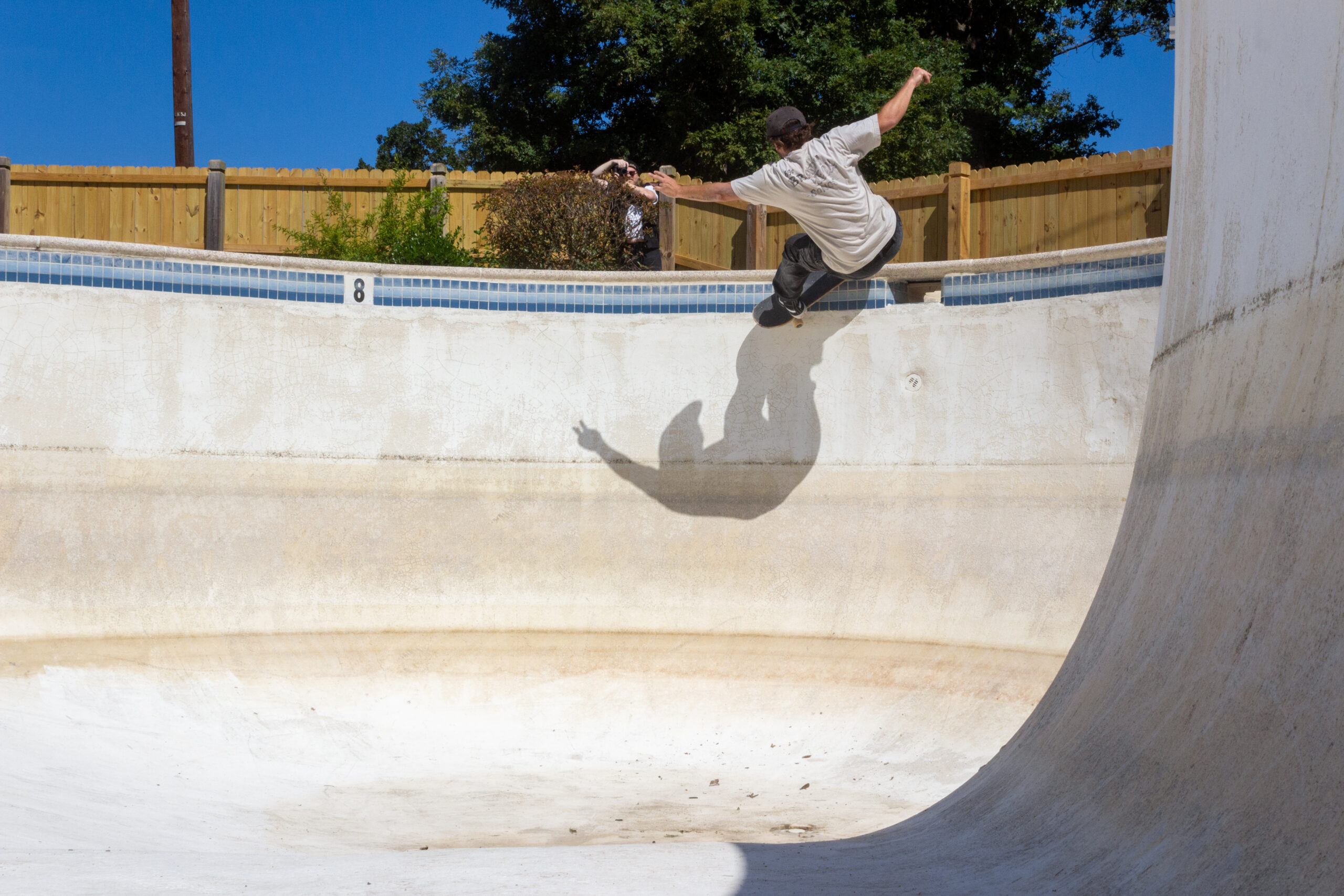
Rainfall was below average for the next few weeks and the pool remained skateable. Nevertheless, it was increasingly difficult to maintain the pool’s water level. Flash flood warnings increased and each storm pissed up to two inches of water. This translated to about three feet of water in the deep end. The pool is painted white and reflects the heat from the sun. Our summer temperatures have regularly been towards one hundred degrees. Jeremy Flora and I tried to bucket the storm water, but by the time we ran out of drinking water we had barely made a dent in the volume that needed to be removed. Bernie McGrew provided us with his gas-powered three-inch pump to drain the water. Jeremy and I stepped on top of upside-down buckets on opposite sides of the chain link fence. Slowly, we transferred the fifty-six pound pump over the fence, making sure to keep it level to prevent damage to the engine. While it pumped the water out to the adjacent playground area, Jeremy and I each filled buckets and poured them away from the pool deck. One foot of water remained when the spark plug quit. We had to finish with buckets, move down to cups, then to the sponge, the towel, and dry. We started skating, not caring if the pool would be filled with storm water by the next week. It was.

